You can calculate p-value from a z score by hand by applying the Z score formula.
After getting the value of the z score, you can use the z score in the p-value table. In calculating p-value from a z score by hand, you can find the p-value for a left-tailed test, the p-value for a right-tailed test, and the p-value for a two-tailed test.
Difference between a p-value and a z score
Z-Test and P-Value differ primarily in that the Z score discusses whether the null hypothesis should be accepted or rejected. In contrast, P-Value sheds light on whether the experiment’s observations are consistent or inconsistent when the null hypothesis is true.
A z-test is a test of the standard normal distribution, which is characterized by a bell-shaped curve with a mean of 0 and a standard deviation of 1. These tests are used in a variety of statistical procedures.
A P-value is a measure of a statistical result’s statistical significance. Another key difference is that the p value is based on the standard error of mean (SEM), not the standard deviation, while the z score considers standard deviation. Notably, the standard deviation and the mean are the observed statistics.
what is the p-value of a z score (definition)
The P-value of a Z-score refers to the value which represents the probability of the z score. For example, a z score of 0.96 corresponds to a p value of 0.83147. This depicts that the chance of the event happening is 83.147%.
Relationship between p-value and a z score
The P-Value is determined by converting the statistic (such as mean/average) into a Z-Score. Then, you ought to look up the value in a standard normal table using that z-score. If that value exceeds the desired confidence level, you can reject the null hypothesis and accept the alternative hypothesis.
How to find p-value from negative z score (with examples)
Finding the p-value for a left-tailed test
The left-tailed test refers to getting the p values from the table of -z to 0 or the negative standard normal table. A p-value in the left-tailed test refers to the area to the left of the test statistic. For example, find the p-value in a left-tailed test if the test statistic is z=-1.67
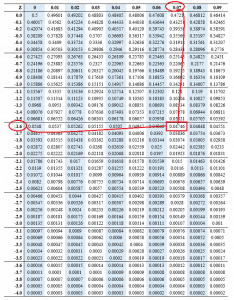
The p value of z= -1.67 is 0.04746
Example two, Find the P-value in the left-tailed test if the z score is -0.79
We check the value of -0.79 directly from the table. Thus, we will have;
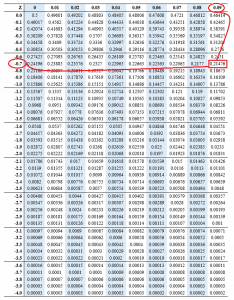
The p value of z= -0.79 is 0.21476
How to find p-value from positive z score (with example)
Finding the p-value for a Right tailed test
The right-tailed test refers to getting the p values from the table of 0 to +z or the positive standard normal table values. A p-value in the right-tailed test refers to the area to the right of the test statistic. For example, find the p-value in a right-tailed test if the test statistic is z=0.96
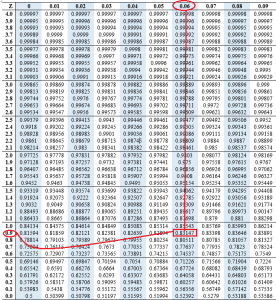
The P-value will be;
=1-0.83147
=0.16853
Example two, Find the P-value from a positive z score of 3.79
We check the value of 3.79 directly from the table and then subtract the value from 1. Thus, we will have;
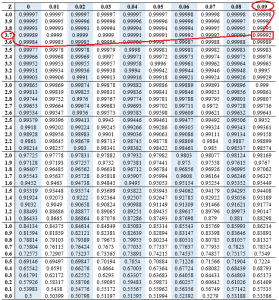
The P-value will be;
=1-0.999992
=0.00008
Example three, Find the p-value from a positive z score of 2.68
We check the value of 2.68 directly from the table and then subtract the value from 1. Thus, we will have;
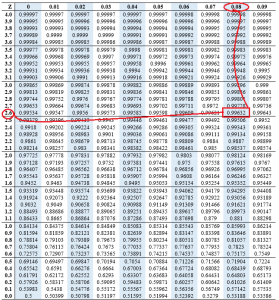
The P-value will be;
=1-0.99632
=0.00368
Finding the p-value for a Two-tailed test
In conducting a two-tailed test, we get the value of the p-value from the z score table, and we multiply the value by 2. For example, if we are conducting a two-tailed hypothesis test and we achieve a z score of -1.45, we can get the value of the two-tailed test as follows;
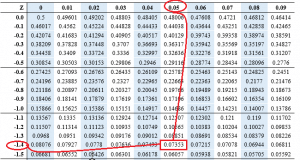
=0.07353×2
=0.14706
P-value z score chart
The P-value z score chart is the same chart as the standard normal distribution table. Here is the standard normal distribution table (Z score table)
